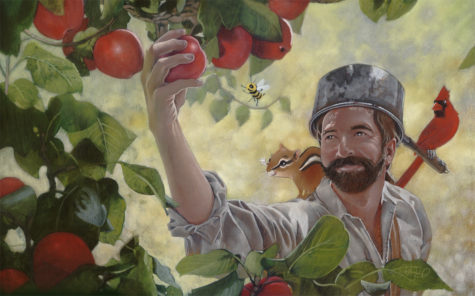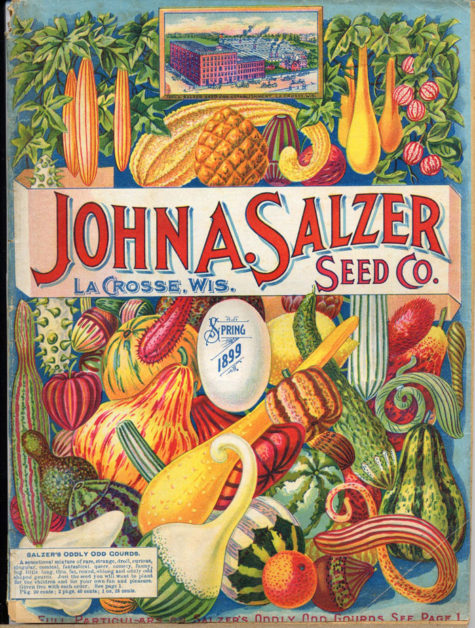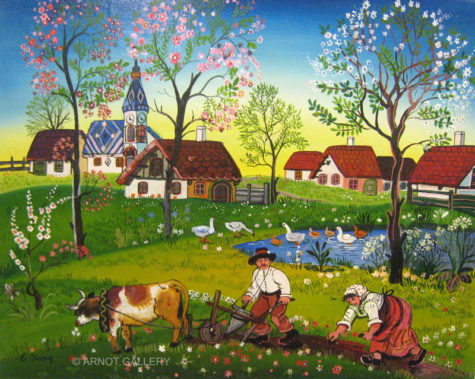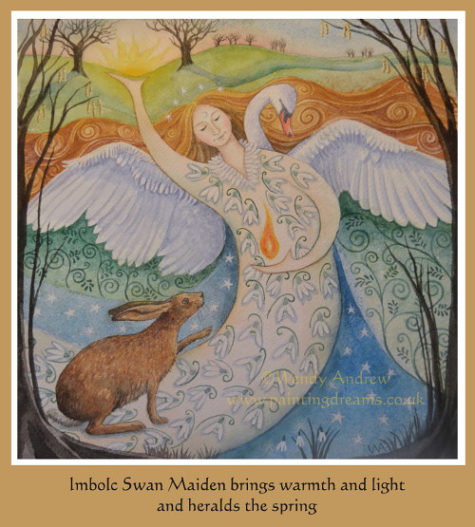Seeds
Celebrating John Chapman, legendary American pioneer and folk hero who planted apple trees across the American Frontier. Chapman was born in Massachusetts, September 26, 1774, but Johnny Appleseed Day is celebrated on March 11th.
Chapman earned his nickname because he planted small orchards and individual apple trees during his travels as he walked across 100,000 square miles of Midwestern wilderness and prairie. He was a genuine and dedicated professional nurseryman, known for his generous nature, his love of the wilderness, his devotion to the Bible, his knowledge of medicinal herbs, his harmony with the Indians, and his eccentric nature, too.
Celebrate this holiday by doing something with apples. Decorate with images of apples, apple trees, and Johnny Appleseed himself. You might visit an orchard to pick apples, hold a pot luck feast with apple smoked pork and apple pie. You might even want to plant an apple tree in your yard.
Here is a blessing you can use:
Apples are sacred
As everyone must know.
We remember Johnny
Wherever apples grow.
So we say a blessing
Wherever they may be
Blessing on the apples
And Blessing on each tree.
~Elizabeth Barrette
About Johnny Appleseed
While the legend depicts Johnny Appleseed as a barefoot vagrant, cooking pot on his head, and roaming the landscape strewing apple seeds randomly, it is far more likely that he was more of an eccentric but skilled professional, establishing nurseries of apple trees, and selling his services progressively westward to landowners interested in planning orchards. He’d teach his clients how to establish an orchard, how to keep deer and livestock at bay, and once the nursery was thriving, he’d move on to the next person interested in planting orchards.
If he had to stay in one place for any length of time, he’d erect a teepee like structure and live humbly on the bare ground. It is said that his only possessions were the clothes on his back, a bowl and a spoon, and a cooking pot for his gruel.
He was a follower of Swedenborg and devoutly believed that the more he endured in this world the less he would have to suffer and the greater would be his happiness hereafter—he submitted to every privation with cheerfulness and content, believing that in so doing he was securing snug quarters hereafter.
In the most inclement weather he might be seen barefooted and almost naked except when he chanced to pick up articles of old clothing. Notwithstanding the privations and exposure he endured, he lived to an extreme old age, not less than 80 years at the time of his death—though no person would have judged from his appearance that he was 60. He always carried with him some work on the doctrines of Swedenborg with which he was perfectly familiar, and would readily converse and argue on his tenets, using much shrewdness and penetration.
Next time you bite into an apple, think of “Johnny Appleseed.”
From Almanac.com
Called Feriae Sementivae, this one or two day Roman festival was moveable, but generally began between January 24 and January 26. Sacred to Tellus, and Ceres, this festival was for the protection of seeds, either those sown the previous fall, or those to be sown in the spring. During Sementivae plowing oxen were decorated with garlands, and puppets or masks were hung from tree branches.
This is an excellent time to begin to think about planting a “Witch’s Garden” and to do spellwork involving seeds. Spiritually and metaphysically, this is an optimum time to sow the internal seeds of what we hope to bring forth as the year unfolds.
Today (March 26) marks the beginning of the plowing season in Slavic regions. Before this date the earth is regarded as pregnant. It is a crime against nature and Leshachikha to plow the soil with iron tools when it till bears a magical child (spring). Once earth has given birth, the fields can then accept new seed, which the birds will also appreciate!
From 365 Goddess, we have this way to celebrate the day:
- Themes: Earth; Nature; Harvest; Birth; Protection
- Symbols: Soil; a Leaf; Seeds
- Presiding Goddess: Leshachikha
About Leshachikha: A goddess who sometimes appears as a Slavic forest, a wild animal, or a leaf, Leshachikha is said to have died in October and revived around this time in spring. She fiercely protects her lands, not taking kindly to any who abuse them. In this manner she teaches us about reciprocity and nature’s fury. Additionally, Leshachikha’s watchful aspect can be applied to our figurative lands – for example, safeguarding our homes.
To Do Today:
Go to a nearby field or park today and scatter some seed to Leshachikha to greet her as she awakens.
Whenever you need a little extra protective energy, pick up a fallen leaf and put it in your pocket. This will keep Leshachikha’s guardian powers with you all day. To bring that protection into your home, wax the leaf to preserve it, symbolically sustaining the magical energy forever. Put the waxed leaf near your entryway or in the room where you spend the most time.
Celebrated on February 2nd, Imbolc or Imbolg, (pronounced “IM-bulk” or “EM-bowlk”), also called Oimealg, (“IM-mol’g), by the Druids, is the festival of the lactating sheep. It is derived from the Gaelic word “oimelc” which means “ewes milk”. Herd animals have either given birth to the first offspring of the year or their wombs are swollen and the milk of life is flowing into their teats and udders.
It is the time of Blessing of the seeds and consecration of agricultural tools. It marks the center point of the dark half of the year. It is the festival of the Maiden, for from this day to March 21st, it is her season to prepare for growth and renewal. Brighid’s snake emerges from the womb of the Earth Mother to test the weather, (the origin of Ground Hog Day), and in many places the first Crocus flowers began to spring forth from the frozen earth.
The Maiden is honored, as the Bride, on this Sabbat. Straw Brideo’gas (corn dollies) are created from oat or wheat straw and placed in baskets with white flower bedding. Young girls then carry the Brideo’gas door to door, and gifts are bestowed upon the image from each household. Afterwards at the traditional feast, the older women make special acorn wands for the dollies to hold, and in the morning the ashes in the hearth are examined to see if the magic wands left marks as a good omen.
Brighid’s Crosses are fashioned from wheat stalks and exchanged as symbols of protection and prosperity in the coming year. Home hearth fires are put out and re-lit, and a besom is place by the front door to symbolize sweeping out the old and welcoming the new. Candles are lit and placed in each room of the house to honor the re-birth of the Sun.
Another traditional symbol of Imbolc is the plough. In some areas, this is the first day of ploughing in preparation of the first planting of crops. A decorated plough is dragged from door to door, with costumed children following asking for food, drinks, or money. Should they be refused, the household is paid back by having its front garden ploughed up.
In other areas, the plough is decorated and then Whiskey, the “water of life” is poured over it. Pieces of cheese and bread are left by the plough and in the newly turned furrows as offerings to the nature spirits. It is considered taboo to cut or pick plants during this time.
As with all the Sabbats it is a time to celebrate the changes in the land around us. It is important to be outside to see, feel, smell, and appreciate the way that nature is changing, to pay our respects to the Gods and to seek their guidance for the coming season.
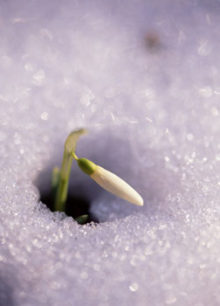 You can either take a walk to a favorite place, where you will be able to appreciate the changes around you, or as this is a time of new beginnings, it can be interesting to take a new route. Whichever your choice, take with you a small amount of spring water, or collected rain water. As you go, take care to notice the signs of new life and growth and wherever you see new shoots, buds, or leaves sprinkle a few drops on the plant and give thanks to the Goddess.
You can either take a walk to a favorite place, where you will be able to appreciate the changes around you, or as this is a time of new beginnings, it can be interesting to take a new route. Whichever your choice, take with you a small amount of spring water, or collected rain water. As you go, take care to notice the signs of new life and growth and wherever you see new shoots, buds, or leaves sprinkle a few drops on the plant and give thanks to the Goddess.
If you should come across a well or a spring, take the time to make an offering to the waters within. If you have finished the water you brought then your offering should be something which will not contaminate the water in any way. Where a tree grows close to this water you can also tie a single hair to one of its branches and ask for a Blessing for yourself or someone close to you.
If you should be lucky enough to pass grazing land look out for the first lambs of the year. If you see your first lamb of the year on this day you can make a wish.
As this is a time of new life and growth, it is appropriate to plant bulbs or flowers or to sow seeds. However, you will need to use your judgement and some local knowledge to decide whether to actually do so at Imbolc or whether to wait a week (or several) until the last frosts have passed. Of course seeds can often be started indoors and planted out a month or so later.
A word of caution here – if you are unlucky and your seedlings or plants fail, try not to read anything ‘significant’ into this. Unless and until you are an experienced and seasoned gardener, or unless you naturally have ‘green fingers’ you are quite likely to have a less than impressive success rate the first few times.
If you don’t have access to a garden, you can always choose an indoor plant to nurture. Many of the herbs that Witches use in their Magic, as well as their kitchen, will grow quite happily on a window sill. Rosemary and lavender are perhaps the two most useful, as well as having a pleasant scent all year round.
Celebrating Imbolc can be as easy as saying a prayer or as complicated as doing an elaborate ritual. The thing to remember is that it be meaningful and done with intent. Remember also that the Imbolc season runs through the actual day of Imbolc until the Spring Equinox; if you miss the exact day, you haven’t missed out on celebrating. The following is a list of activities to do alone, with a partner, or with your child to honor nature and deity as we travel ever closer to spring. Continue reading
In Celtic times the day was considered to begin at dusk the preceding night, so all major celebrations would commence the night before the day of the festival, much as New Year festivities start on New Year’s Eve.
Also called Imbolg, Oimelc and Candlemas, this is the festival of Bride or Bridget. It celebrates the Goddess’s transformation from Crone to Maiden and heralds the coming Spring and the change from dark to light. One of the ways to celebrate this is with a Circle of lights.
The dates given for this sabbat vary. On some calendars it is given as Feb 1st and on others Feb 2nd. I think the confusion might possibly stem from this practice of commencing the celebration the night before.
Everyone gathers in a Circle, lit only by a single black candle; the wick should be trimmed to give the smallest of flames. Each person has an unlit white candle. When everyone is ready someone says:
“This is the festival of Imbolg and the first signs of returning life tell us that Spring is on its way.
Let us light the path for the new season and say farewell to the old.
Blessed Be.”
They light their white candle from the black one, state something they wish for in the coming season, and extinguish the black candle. Going around the group Deosil (clockwise), each person states their own hopes and lights their candle from that of the person next to them. When all the candles are lit, everyone says together:
“We welcome the Goddess as Maiden,
We welcome the signs of new life.
We welcome the coming Spring.”
The candles can be placed somewhere safe to burn whilst everyone enjoys a feast or, if this is not a family celebration, they may be extinguished and taken home to bring Spring into everyone’s homes.
From: The Real Witches’ Year
